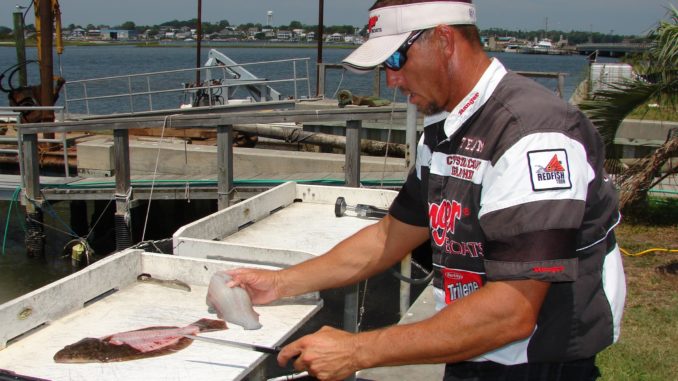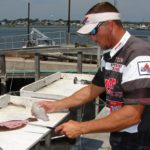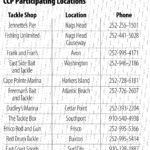
NCDMF program can get plenty of useful data
Fishermen concerned with the quality of the data used by N.C. Division of Marine Fisheries biologists to monitor fish stocks have been given a way to put their money where their mouths are — and there’s really no money required.
All it takes is for fishermen to fillet their catches and deliver the carcasses to the nearest NCDMF Carcass Collection Center. If you are at a marina with a collection center, just walk the carcass to the collection center instead of throwing it away. There is a little information to be collected, but it’s minimal and takes only a couple of minutes.
So you wonder how a filleted fish carcass can help manage a fishery?
Randy Gregory, a biologist with NCDMF, said, “Biologists can collect length, age and often sex data from the carcasses, and it can be used in stock assessments to better manage our fisheries resources. Any complete carcass will give us length and age information. It the fish are filleted and the internals aren’t cut out and discarded, we can also determine the sex. It gives us a way to gather this information without having to go catch fish ourselves and remove more fish from the resource.”
The Carcass Collection Program is a coastwide effort funded by proceeds from sales of the N.C. Coastal Recreational Fishing License. If fishermen have ever wondered how their license money was used to benefit fishing, this is one of the ways. In this time of greatly reduced budgets for wildlife and fishery agencies, this is a program that arrived just in time.
With other funding low, NCDMF biologists regard the carcasses donated by recreational fisherman as a critical source of data. The agency has placed Carcass Collection Centers with freezers at multiple locations along the coast to allow anglers to easily donate their carcasses, from Jeanette’s Pier in Nags Head to The Tackle Box in Southport. Others will be added as funds become available, and marinas, tackle shops, piers and other suitable locations become interested. The only cost to the businesses hosting carcass donation locations is the electricity to run the freezer.
NCDMF regularly collects information about fish stocks in state waters. Information, including age, size and reproductive potential, is vital to assess the number of fish in the population. Age is collected by analyzing scales or hard body parts — ear bones (otoliths) and spines — for annual growth rings. By determining the age of fish, biologists can begin to understand the age-structure of the population and growth rates.
In a fishery with a healthy population age structure, fish of all ages are represented. When age classes are missing, it is usually indicative of problems within that fish stock. Reproductive potential can also be measured by length and age information, as mature fish are usually more prolific spawners than younger fish, especially those that have only recently reached sexual maturity.
Information from the Carcass Collection Program can be compared, contrasted and merged with data from other management programs to get a better overview of the health of fish stocks and population numbers.
Donating a carcass is easy. The first thing to do is to keep the fish iced well for freshness for you to eat. You keep the fillets and donate the carcass.
When filleting the fish, take care to keep the head and tail intact; that’s necessary for the measurements. Also, try to fillet the fish so its internals remain in the carcass. Internal organs can be examined for many things, but primary for this survey is to determine the sex of the fish.
Do not let the carcass spoil by waiting to take it to the carcass collection location. It is best to take it immediately after cleaning, but if put on ice, it will stay fresh for a while. To check for locations visit the Carcass Collection Program website at http://portal.ncdenr.org/web/mf/carcass-collection.
The collection stations will have bags for the carcasses and donation cards. Fill out the card as completely as possible and put it in the bag with the carcass, tie the bag closed and place the bag in the freezer. Fishermen with more than one carcass to donate should use a separate bag and card for each carcass.
The species currently being sought by the Carcass Collection Program are: black sea bass, black drum, croaker, cobia, flounder, gray trout (weakfish), grouper, red drum, sea mullet (kingfish, whiting, VA mullet), sheepshead, snapper, Spanish mackerel, spotted seatrout (speckled trout), striped bass and triggerfish. As more species are added to the program, they will be listed on the website and added to the collection cards.
Fishermen often ask what they can do to help the resource. Donating carcasses in one that is very easy and requires little time, money or effort. The next time you catch one of the eligible species, consider filleting it and donating the carcass to research. You will be helping biologists to better understand and safeguard the fishery for yourself and future generations.






Be the first to comment